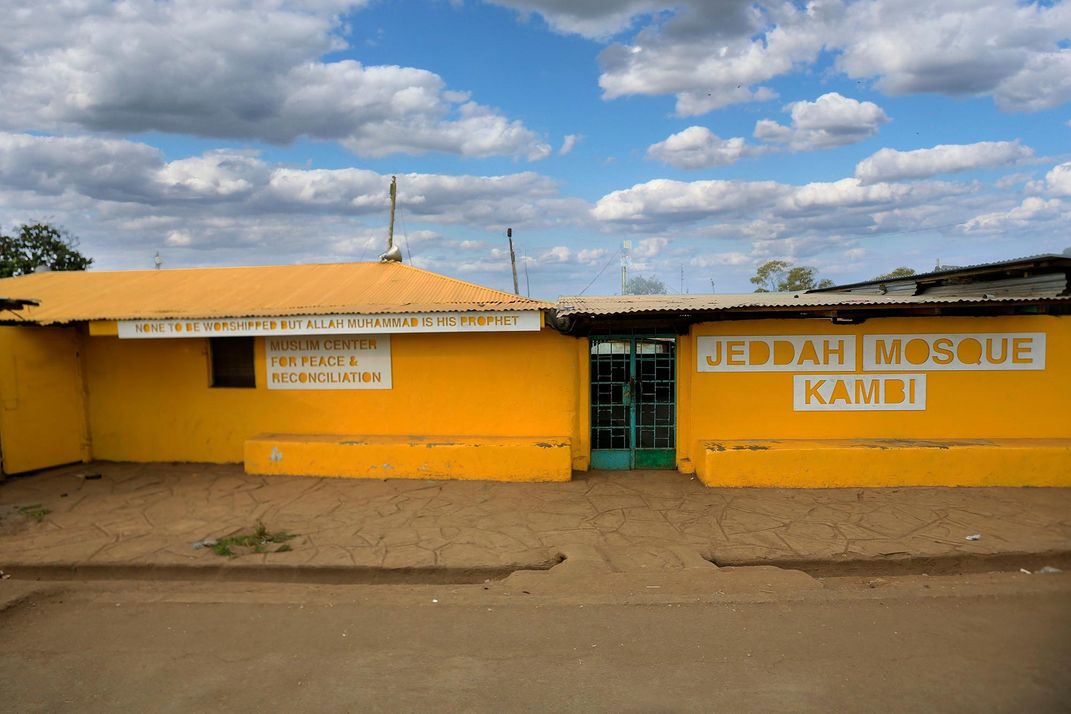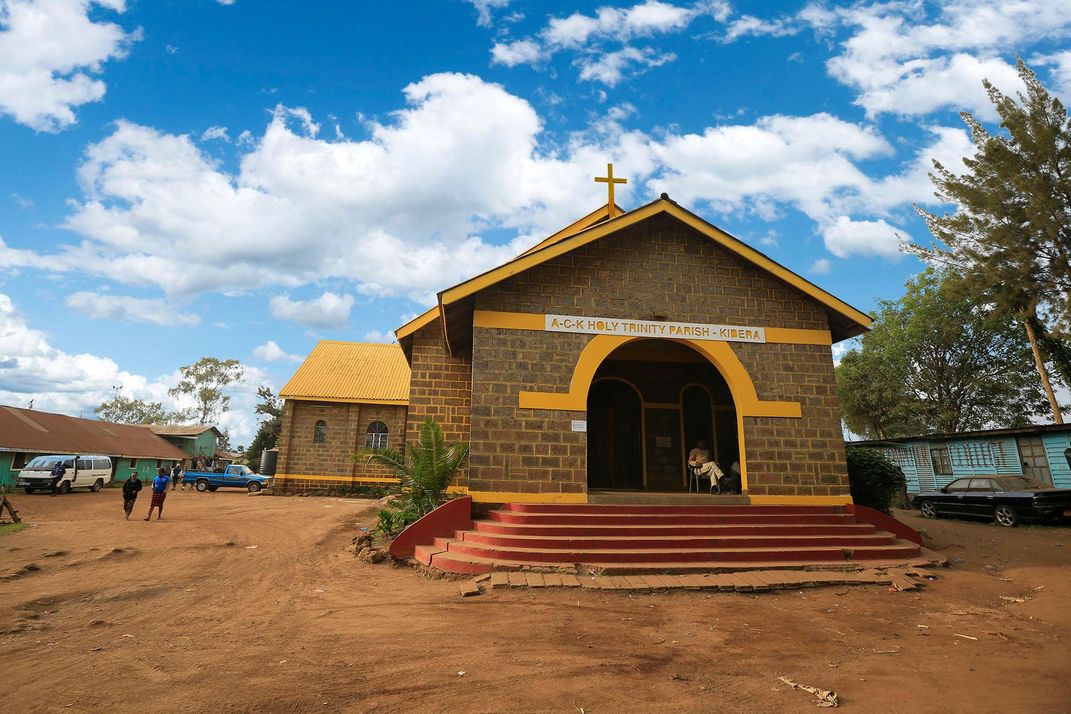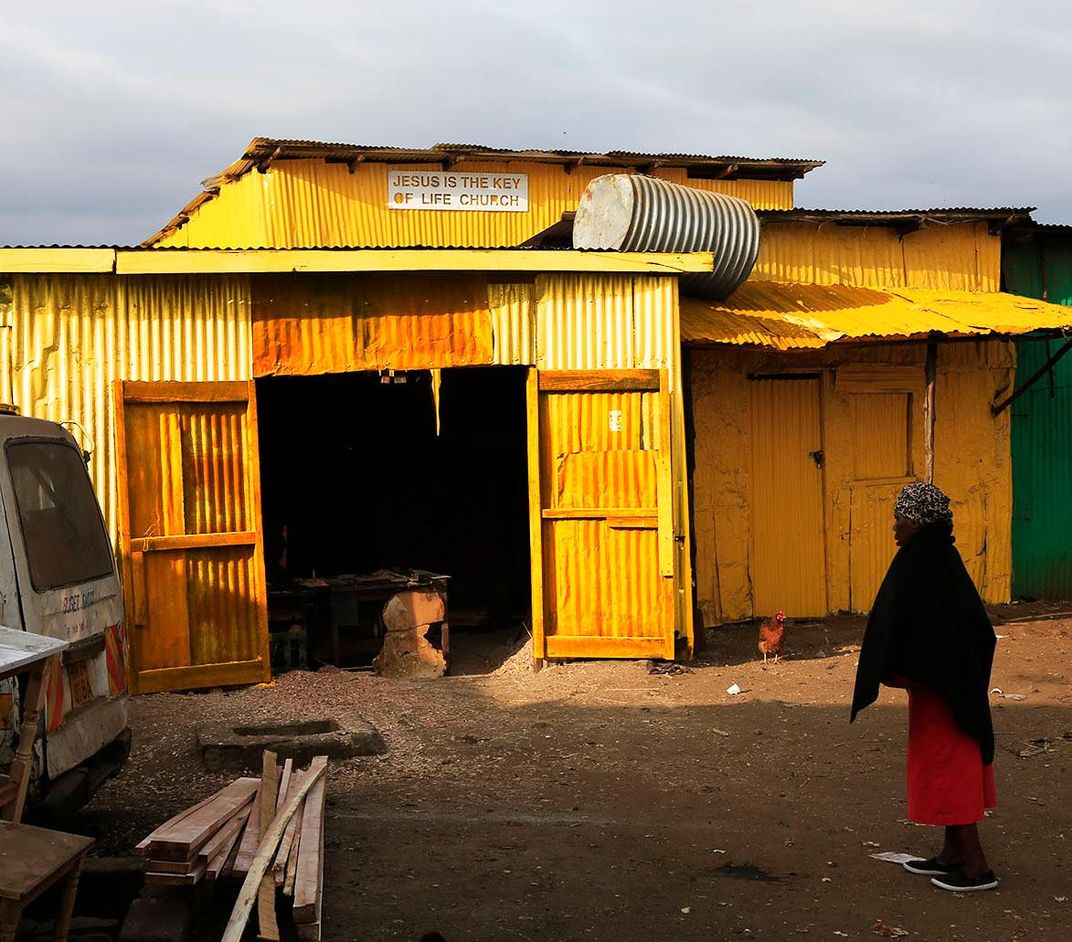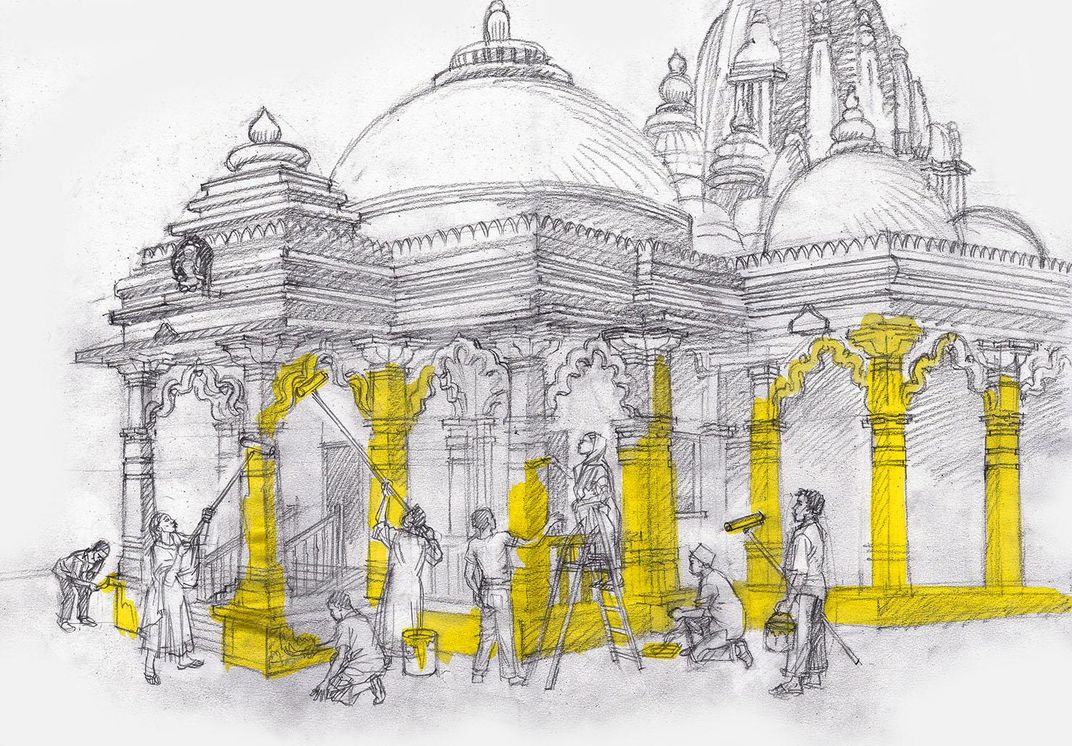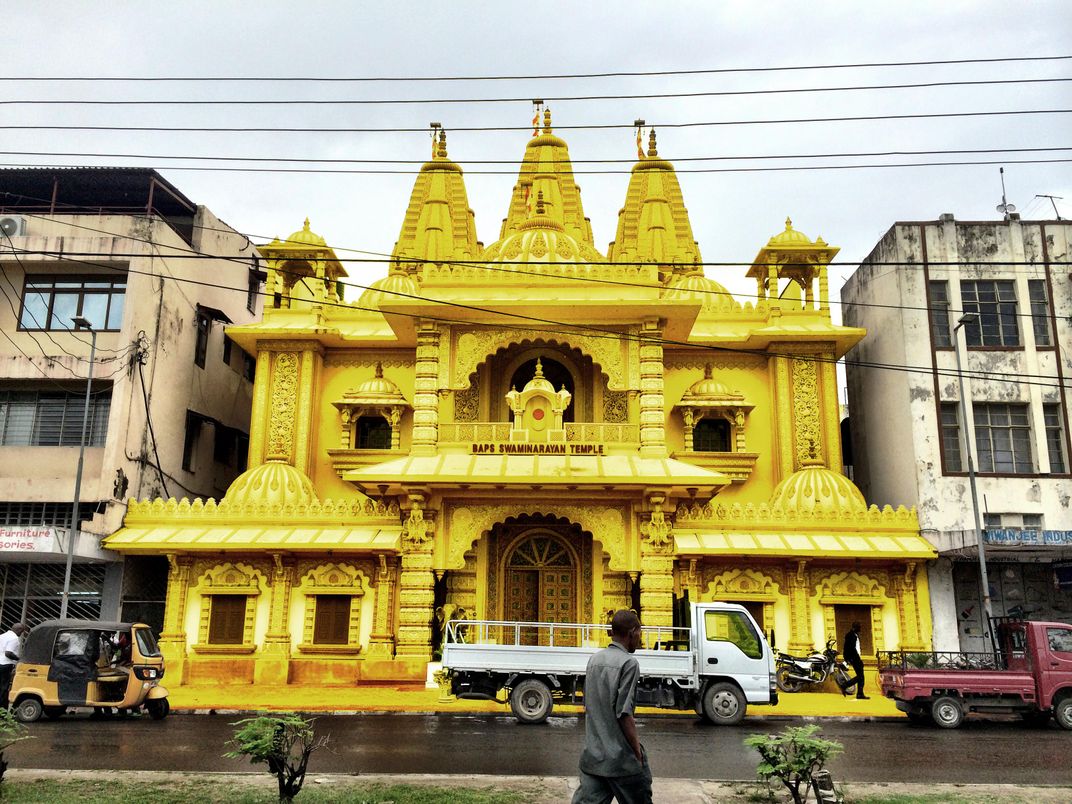This Group Celebrates Kenya’s Religious Diversity by Painting Religious Centers Yellow
Painting for pluralism
Over the last few months, temples, churches and mosques in the Kenyan capital of Nairobi have turned a bright shade of yellow. While this isn’t the result of a divine touch, the bright colors are meant to celebrate Kenya’s long-held traditions of religious and cultural tolerance at a time of great tension.
In recent years, Kenya has not exactly had a glowing reputation when it comes to religious openness. Even before the religious terrorist group al-Shabaab began its campaign of brutal violence and kidnapping, the relationship between Kenya’s Christian and Muslim populations wasn’t exactly rosy, Antonia Blumberg reports for the Huffington Post. However, by visually binding the country’s houses of worship together, a project called “Colour in Faith” hopes to help bring these communities together in spite of attempts to sow discord.
“Kenya has had a long established culture of religious acceptance, tolerance, accommodation and exchange,” organizer Yazmany Arboleda tells Claire Voon for Hyperallergic. “These cultures are being undermined by an infusion of hardline interpretations of faith and the deepening of a global identity based on media stories about division, terrorist attacks, and insecurity. The risk is a cultural confusion that would have agents of insecurity succeed in dividing these societies.”
Kenya’s population is mostly Christian with a significant Muslim minority, but those aren’t the only religions practiced in the country. In addition to mosques and churches, Arboleda and his volunteers have also painted Hindu temples and Jewish synagogues bright yellow, Voon reports.
"The yellow color symbolizes our openness. It indicates that we can work together as people of faith," Reverend Albert Woresha Mzera, who runs the freshly yellow-painted Holy Trinity Anglican in Nairobi’s Kibera slums, tells Fredrick Nzwili for the Houston Chronicle. "Kibera has been a hot spot of ethnic violence and we are now using this action to steer for peace."
While Arboleda has had plenty of religious institutions turn down his offer to give them a fresh coat of bright yellow paint, the ones who have accepted have gone in whole hog. The group frequently gets as many as 70 volunteer at a time, many from religions other than whatever building they are painting that day. Mzera says the project has brought his own congregation closer with muslim worshippers from the nearby Jeddah Mosque Kambi. After the two communities helped paint each other’s house of worship, the two groups have come together in prayer as well, Nzwili reports.
"Yellow is neutral and is the color of the sun. It reflects on everyone," Jeddah Mosque Kambi’s imam, Sheikh Yusuf Nasur Abuhamza, tells Nzwili. "Muslims painted the Anglican church and Christians painted the mosque. By painting together, the faithful share love and unite the people."
While Arboleda has so far focused on Nairobi and Kenya, he hopes that other regions experiencing religious conflict will pick up the idea as well, Voon reports. It's a simple concept, but by painting religious institutions the same color, he wants people to see just how much they all share in common.
